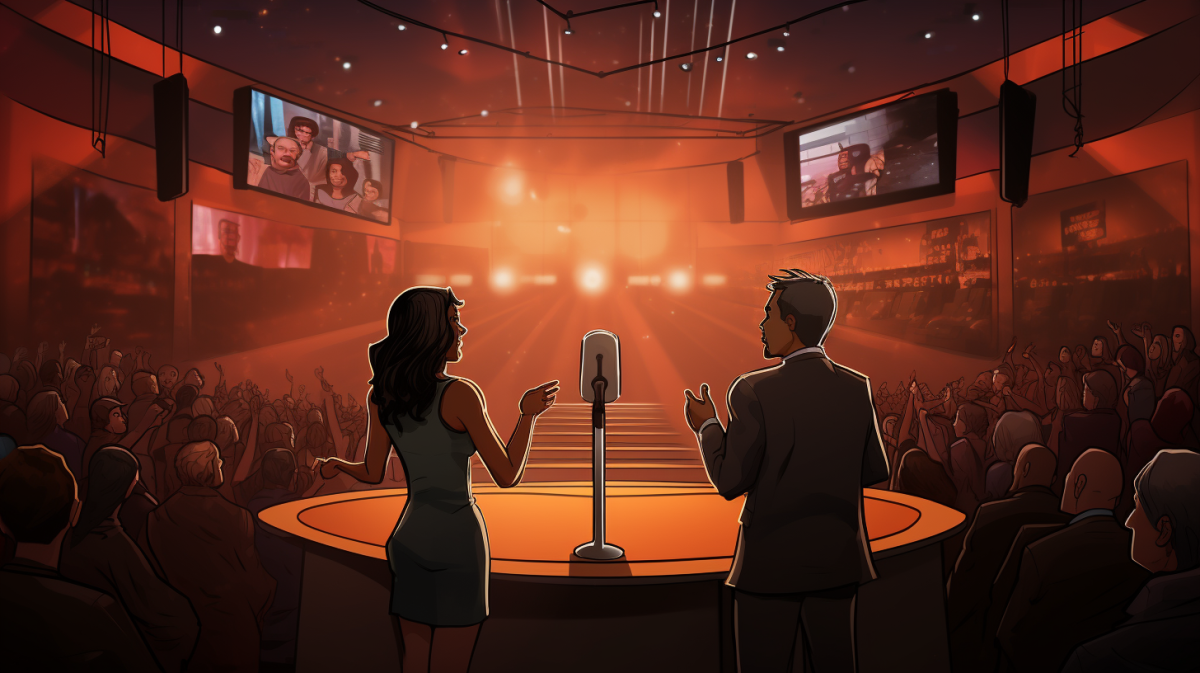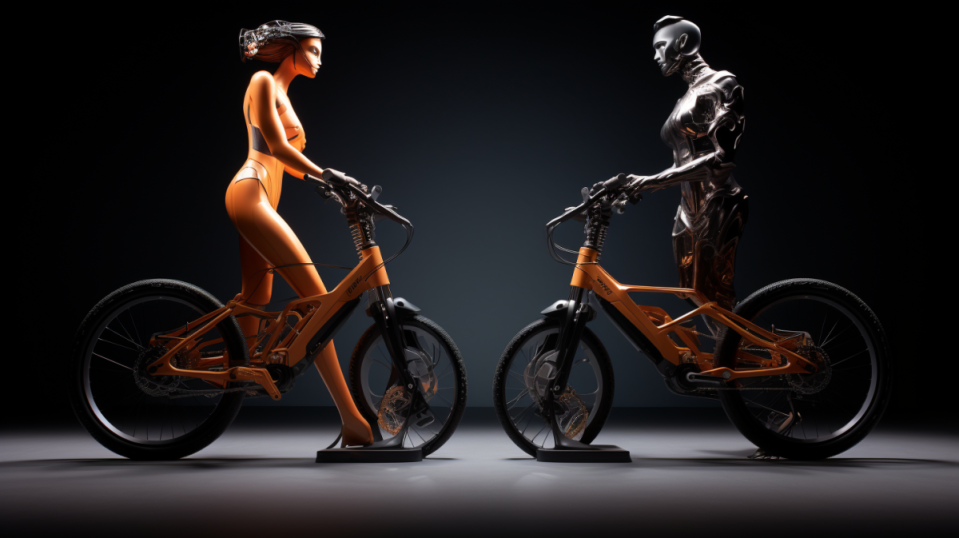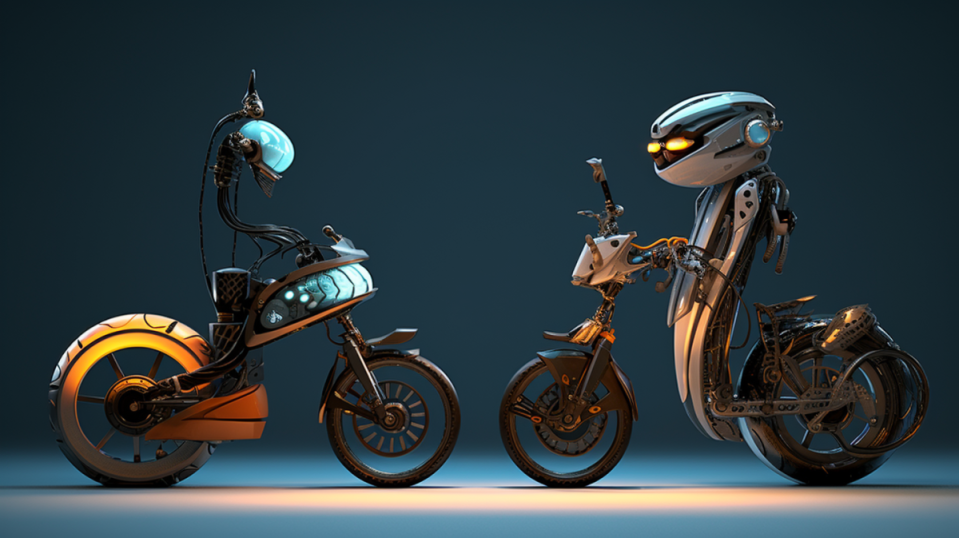Discuss & Debate: Cadence Sensors Vs Torque Sensors

Bruno Long
When it comes to e-bike technology, it seems to be changing faster than Superman in a phone booth (speaking of technology, do we even have phone booths anymore?). New motors, longer-lasting batteries, or odd-looking frame designs; whatever the change, it is always evolving at lightning speed. People debate about the latest tech compared to the old or outdated. But what if the tech itself could debate its own merits and point out the faults of its competition?
Well, today we imagine that exact thing when it comes to e-bike sensors, mainly torque sensors and cadence sensors. It seems that everyone has their preferred style. But has anyone ever asked a cadence sensor why it thinks it is so much better than a torque sensor? We let the two sensors duke it out, debate-style, to see who reigns supreme or if they can settle their differences and get along.
Torque Sensor vs. Cadence Sensor: A Playful Debate
Opening Statements:
Torque Sensor (TS): Ah, the torque sensor, the unsung hero of electric bikes. Where the raw power of human effort meets the precision of technology. It's all about feeling the road beneath your tires and getting that seamless boost when you need it.
Cadence Sensor (CS): Well, well, torque sensor, you may have your charm, but let's not forget the efficiency and simplicity of the cadence sensor. It's all about the rhythm, and the fluidity of your pedal strokes, providing a smooth and reliable electric assist.
Basics of Each System
Torque Sensor (TS): Imagine having a personal assistant that reads your mind. That's the torque sensor for you. It measures the force you apply to the pedals, providing a proportional assistance level. The harder you pedal, the more power you get. It's the epitome of natural and intuitive riding.
Cadence Sensor (CS): Natural, maybe. But what about the effortless elegance of the cadence sensor? It doesn't care how hard you stomp on those pedals; it's all about the rhythm of your pedal strokes. You set the pace, and the assist matches it, like a dance partner following your lead.

Bruno Long
Comparing Feel
TS: The torque sensor creates an experience akin to traditional biking, but with a magical tailwind. You feel connected to the road, able to vary your effort intuitively. It's like having a superpower that amplifies your strength without losing the essence of cycling.
CS: Strength, yes, but what about efficiency? With the cadence sensor, it's a smooth, almost zen-like ride. Set your pace, maintain your cadence, and let the electric motor seamlessly complement your efforts. It's like gliding on air, with an added boost whenever you decide to quicken the tempo.
Pros and Cons
TS: Pros? I offer you the gift of natural biking experience. Feel the hills flatten beneath you, and relish the control you have over the electric assistance. But, ah, the cons? It can be a bit too sensitive, reacting to every twitch in your pedal stroke. And cost, my friend, cost.
CS: Precision is my middle name. I’m straightforward, cost-effective, and provide a consistent boost. No need for extra sensitivity; I keep it simple. Cons? Well, some say I lack that intuitive feel, that connection to the road. But, efficiency is its type of beauty.
Why Choose One Over the Other
TS: Companies opt for torque sensors when they want to recreate the true cycling experience. If they're targeting avid cyclists who want that extra push without compromising the feeling of being one with the bike, I'm their go-to. Sure, I might cost a bit more, but quality comes at a price.
CS: When efficiency is the game, and cost-effectiveness is the goal, they call on me. I’m the choice for commuters and those who want a reliable assist without overthinking their pedal strokes. I might lack a bit in the finesse department, but I get the job done, day in and day out.
Related: 9 Electric Cargo Bikes to Carry You (and Your Kids) Into A Pedal-Powered Future
Mid-Drive Motors and Hub Motors -- The Great Divide
TS: Look at the mid-drive motors, the crown jewel of electric bike powerhouses. They often pair me, the torque sensor, with a cadence sensor for the best of both worlds. We create a symphony of power and precision that conquers any terrain. But hub motors, they are a bit stubborn. It's either me or the highway.
CS: Mid-drive motors might flirt with the torque sensor, but in the hub motor world, it's a solo act for me. And you know what? It works. I provide a consistent boost, and for some, that's all they need. Simple, reliable, and cost-effective.

Bruno Long
The Hybrid System Enters the Debate
Hybrid System (HS): Ladies and gentlemen, can we all just get along? Why limit ourselves when we can have the best of both worlds? The hybrid system is the future, combining the finesse of the torque sensor and the consistency of the cadence sensor. It's about harmony, a seamless blend that caters to every rider's whim.
TS: Oh, please! Harmony, you say? What happened to the pure, unadulterated connection with the road? Mixing and matching might dilute the experience.
CS: Dilute? No, my friend, it refines. The hybrid system is about adapting to the rider's preference. It's not a compromise; it's an evolution. Why limit ourselves when we can have it all?
HS: Exactly! The hybrid system caters to the diverse needs of riders. It's not about choosing one over the other; it's about providing a tailored experience. A torque sensor for the purists and a cadence sensor for the pragmatists.
Closing Statements
TS: Fine, fine, hybrid system. You might have a point. Riders want options, and combining the best of both worlds does have its allure. But remember, there's something inherently beautiful in the simplicity and purity of the torque sensor. It’s the soul of cycling, after all.
CS: Ah, torque sensor, you're a romantic. But practicality has its charm too. The cadence sensor keeps things straightforward and efficient. And let's not forget, the hybrid system is the future, embracing the best of both worlds. Why settle when you can evolve?
HS: Indeed, why settle? In the grand symphony of electric biking, each sensor has its own melody. The torque sensor brings passion, the cadence sensor brings efficiency, and the hybrid system? It brings harmony. The choice is yours, riders. Embrace the symphony that suits your style.
Is The Debate Settled?
Of course, this debate could go on forever, with all sides having compelling arguments for or against the other. However, it does come down to personal preference, what type of bike you are looking for, and what type of motor or bike fits your specific needs. Make sure to 'do-your-own-research' before buying an e-bike and think about how it would fit into your lifestyle. Then, and only then, can you begin to debate which side of any particular line you want to stand on.

